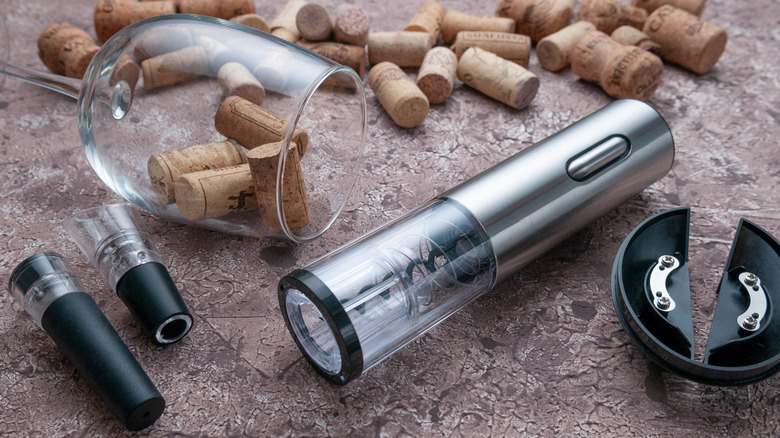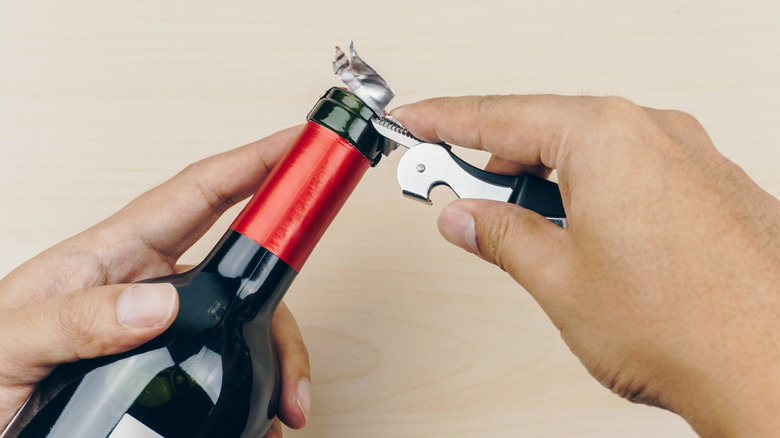Are Wine Foil Cutters Really Necessary?
Drinking wine is an ancient pleasure that comes steeped in historic traditions. Watch any wine aficionado, and you'll see lots of what might seem to be quirky practices like swirling wine in the glass, sniffing a cork when it comes out of the bottle, and owning a drawer full of gadgets for opening various bottles. One item you might see in that drawer is a flat, palm-sized device meant to do one task only: cut the top of a wine bottle closure off to expose the cork below.
Cutting the foil capsule away is more than just a fussy show. It makes drawing out the cork easier, and we recommend you always remove that covering before using a corkscrew. A cork could break under the pressure of the capsule, especially if it's old and crumbly. But as you may have experienced first hand, there's really no need for a tool that only does that task. The capsule can be cut with the knife on a corkscrew, or any other knife at hand. Or you can pull the whole capsule right off with your hands. So, while it's necessary to cut or remove the covering, there's no one single tool that is necessary.
Cutting the foil correctly keeps your wine untainted
Winemakers have favored the classic cork stoppered wine bottle since the 1700s, and most corked bottles were dipped in wax or tar to protect the cork from dirt and damage. In 1833, a thin metal wrapper was patented — a new covering made of soft and moldable lead. The tradition of cutting the capsule below the bottom ridge of a wine bottle opening became the professional standard to ensure bits of dirt and metal didn't touch the wine as it was poured. Most wine foil cutters cut above that ridge, just removing the uppermost circle of a capsule. So while the capsule is no longer lead, most somms still feel it's good practice to cut farther down to keep the metal or plastic from contacting the wine.
Not every home vino drinker is proficient at using the "wine key" corkscrew that comes with a foil cutting blade. There's easily more than a dozen types of wine openers, so if yours doesn't include a blade, we'd recommend a small pocket knife as a multi-purpose tool for removing the foil, although some sets come with a foil cutter as a bonus. Although more and more good wines are closed with screwtops, it's good to know how to open the ones that aren't with a little flair and a minimum of struggle.

